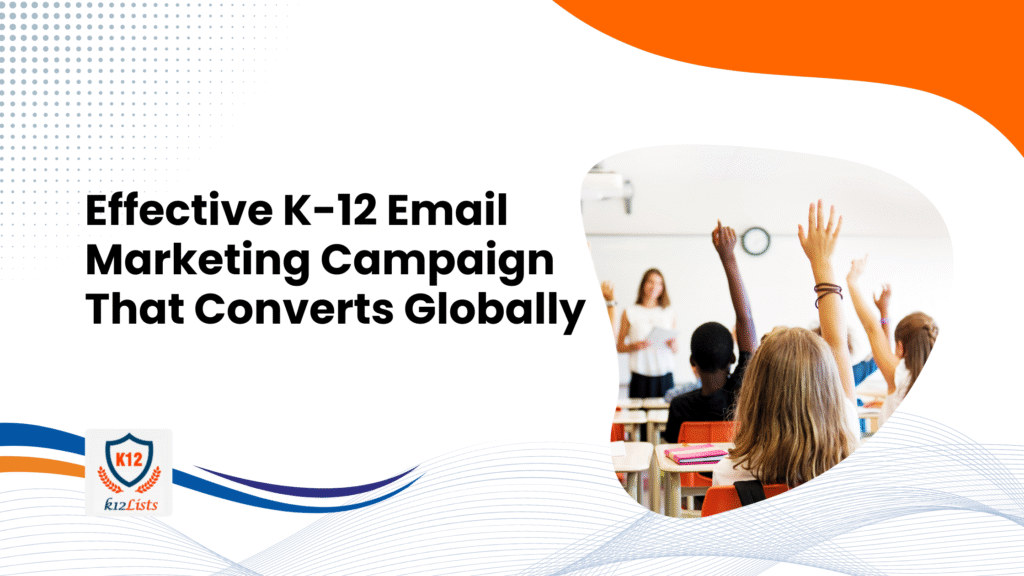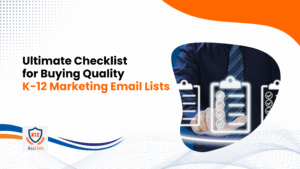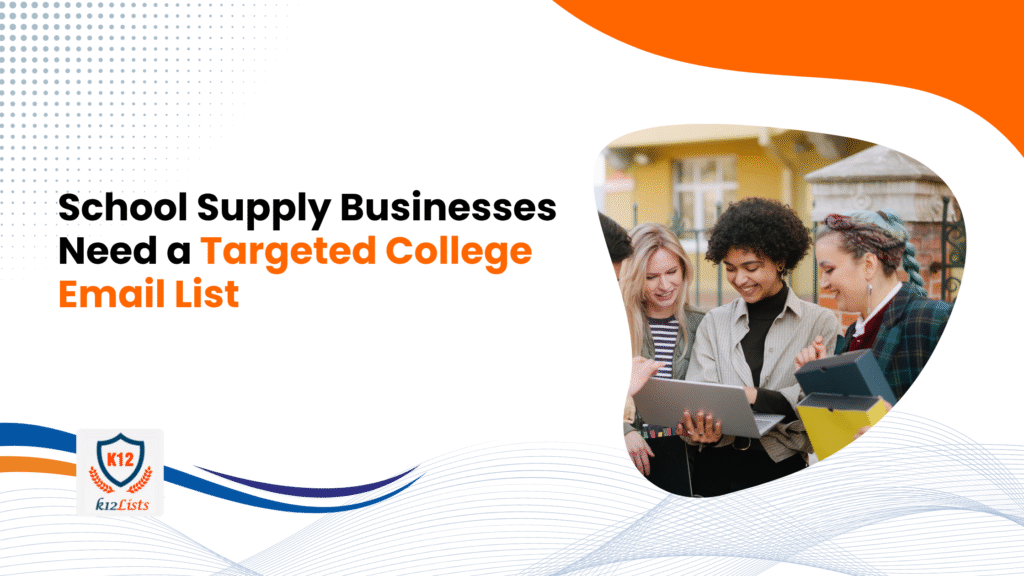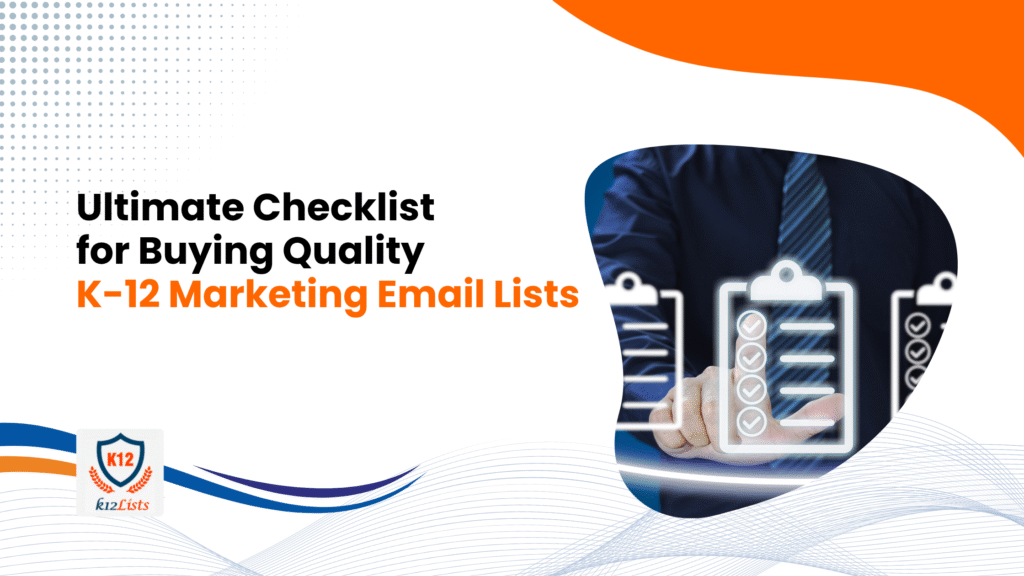Introduction
Reaching schools and educators across the world is no easy task. Whether you’re an EdTech company, an educational publisher, or a training provider, your biggest challenge isn’t creating a great product-it’s making sure the right people know about it. Effective K-12 Email Marketing can help you overcome this challenge by directly connecting your message with the right educators and decision-makers.
That’s where K-12 marketing comes in. Unlike social media or broad advertising, email allows you to directly connect with principals, teachers, superintendents, and school administrators. But sending emails blindly won’t get you far. To succeed, you need to build a global K-12 email marketing campaign that converts—one that respects cultural differences, complies with international regulations, and uses verified contact data.
In this guide, we’ll walk you through exactly how to do that.
Understanding the Global K-12 Market
When you’re running a local campaign, you already know the context—school calendars, curriculum types, or even cultural expectations. But when you go global, things get complex.
- Regional Differences: U.S. schools may prioritize innovation and technology adoption, while APAC schools might focus more on affordability and scalability.
- Curriculum Variations: IB, Common Core, CBSE, and local boards all influence purchasing decisions.
- Cultural Sensitivities: Messaging that works in one country may fall flat—or even backfire—in another.
Takeaway: A successful international school marketing strategy isn’t “copy-paste.” It must be localized for each market while keeping your brand voice consistent.
Importance of a Quality K-12 Email Database
You can’t build a strong house on a weak foundation—and in email marketing, your database is that foundation.
- Verified Contacts Matter: A generic email list will hurt your sender reputation. A verified K-12 education email database ensures you’re reaching real people who make real decisions.
- Right Roles, Right Results: Instead of blasting emails to anyone in a school, target principals, superintendents, IT directors, curriculum coordinators, and teachers based on your product’s relevance.
- Segmentation is Key: With a segmented school administrators email list, you can send grade-specific content to elementary teachers or subject-specific updates to math educators.
This is where working with trusted K-12 email list providers gives you an edge-you skip the guesswork and start with accurate, segmented data.
Steps to Build a High-Converting Global K-12 Email Campaign
Let’s break it down step by step.
1) Define Clear Campaign Goals
Are you raising awareness, promoting a new tool, inviting schools to an event, or driving demo bookings? Your campaign goal decides your email structure.
2) Audience Segmentation
Global outreach doesn’t mean “everyone at once.” Instead, segment by:
- Country or region
- Job role (principal vs. teacher)
- Curriculum type
- Buying stage (awareness, interest, decision)
3) Personalize Messaging
Educators want to feel like you understand their challenges. For example:
- U.S. teachers respond well to innovative classroom solutions.
- European schools may prioritize compliance and data privacy.
- APAC schools often seek cost-effective scalability.
4) Optimize Email Content
- Subject Lines: Keep them short, engaging, and relevant.
- Content: Share insights, case studies, or resources—not just sales pitches.
- Design: Use mobile-friendly formats since educators often check emails on phones.
5) Timing & Frequency
- Consider time zones—sending at 9 a.m. in the U.S. may mean midnight in Asia.
- Avoid overwhelming recipients; 1–2 emails per month often work better than weekly blasts.
6) Compliance & Regulations
Follow GDPR (Europe), COPPA (U.S.), CAN-SPAM, and other local rules. Always:
- Get consent where required
- Include unsubscribe options
- Avoid sharing student data
Pro Tip: Compliance isn’t just legal—it builds trust with schools.
Global Best Practices for Higher Conversions
Want your campaign to perform better? Apply these proven strategies:
- Localization: Use region-specific terms, currencies, and case studies.
- Personalization: Mention a teacher’s subject or a school’s grade level.
- A/B Testing: Try different subject lines or CTAs in different markets.
- Track KPIs: Open rates, click-through rates, and reply rates help refine future campaigns.
For instance, knowing the best time to send emails to schools in each region can significantly increase engagement.
Common Mistakes to Avoid
Even the best marketers slip up. Watch out for:
- Using outdated or unverified lists → leads to high bounce rates.
- Sending identical content everywhere → feels irrelevant to most recipients.
- Ignoring compliance rules → can get your emails flagged or blacklisted.
- Only pitching products → instead of offering value like free resources or guides.
Avoid these, and you’ll already be ahead of many competitors.
How a Verified K-12 Email List Powers Global Campaigns
Imagine you’re expanding your EdTech solution into three continents. Do you:
- Spend month’s manually building contacts, hoping they’re accurate?
- Or start with a verified global school contact database that gives you immediate access to principals, teachers, and administrators?
The second option saves time, improves deliverability, and accelerates your market entry.
Benefits include:
- Faster access to K-12 decision-makers
- Higher international education lead generation
- More accurate segmentation for campaigns
This is where choosing the right K-12 data provider directly impacts your ROI.
If your current campaigns aren’t delivering, the problem may not be your product—it’s your list.
As a Data Provider, How We Can Help You in Email Marketing
Running a global K-12 email marketing campaign is much easier when you have accurate, verified, and segmented contact data at your fingertips. Here’s how a trusted K-12 data provider can support your outreach:
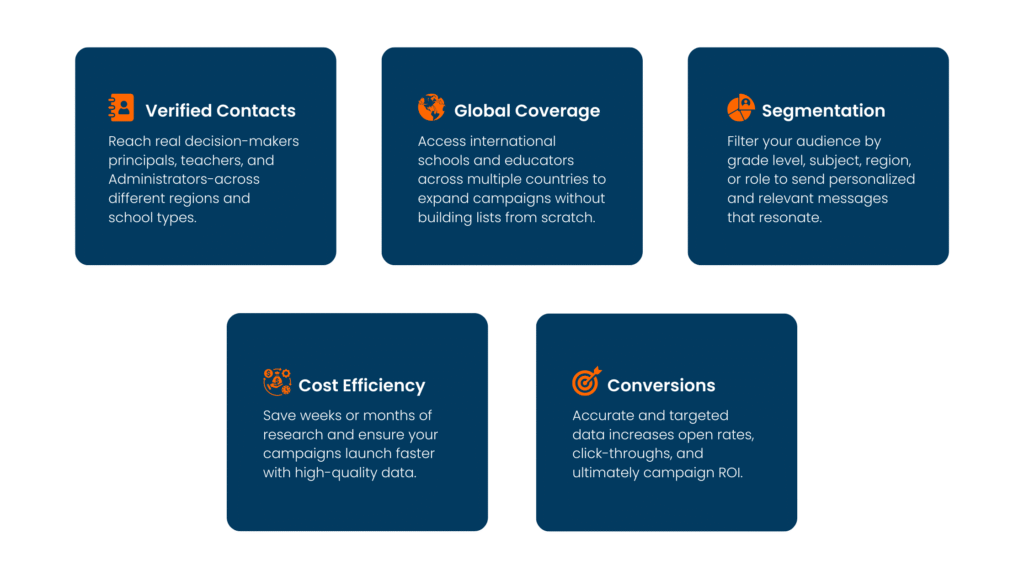
By leveraging a reliable K-12 email database, you can focus on crafting compelling content and strategies, while we provide the foundation for global campaign success.
[Request a Customized K-12 Email Database Today]
Conclusion
Building a global K-12 email marketing campaign that converts requires more than just sending emails-it’s about understanding your audience, using accurate data, and delivering personalized, relevant content. By segmenting your contacts, respecting regional differences, and tailoring your messaging to educators’ needs, you can significantly improve engagement and build lasting relationships with schools worldwide.
A verified K-12 email database is the backbone of any successful campaign. It ensures your messages reach the right decision-makers, saves time, and maximizes your return on investment. Avoid common mistakes like using outdated lists or sending generic messages, and focus on value-driven communication that resonates with schools across different regions.
Start your next global K-12 marketing campaign with confidence. Get access to verified K-12 teacher contact list and connect with the right educators worldwide.
Frequently Asked Questions (FAQs)
The best way to reach K-12 decision-makers globally is by using a verified K-12 email database that includes principals, superintendents, and administrators. Combine this with personalized email campaigns tailored to regional needs for higher response rates.
To stay compliant, follow GDPR, and CAN-SPAM regulations. Use opt-in or permission-based K-12 contact lists and provide clear unsubscribe options. Compliance builds trust with schools and improves long-term engagement.
Yes. Personalized K-12 campaigns show higher open and click-through rates because educators respond to content that fits their role, grade level, and region. Simple personalization—like addressing teachers by subject or offering relevant resources—boosts conversions.
A verified global K-12 contact list saves time, ensures accuracy, and gives you immediate access to educators worldwide. Building a list from scratch is slow and often incomplete, while verified lists are continuously updated to improve deliverability.
The key strategies include:
1. Segmentation by grade level, subject, or geography
2. Personalized messaging for teachers, principals, or IT heads
3. Optimized send times across time zones

